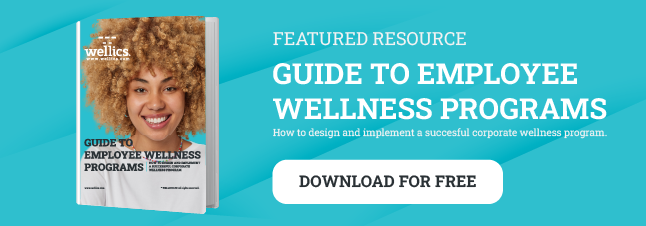The recent wave of resignations, known as the Great Resignation, has highlighted the immense significance of employee benefits in today's modern workforce. With the U.S. Bureau of Labor Statistics reporting an astounding 47.8 million people quitting their jobs in 2021—a remarkable 33% surge compared to the previous year—companies are now confronted with unprecedented challenges in attracting and retaining top talent.
The current job market, with a staggering 10.1 million job openings as of August 2022, has intensified the race among employers to identify the optimal employee benefits that not only entice and engage employees but also align with their budgetary limitations.
In this blog post, we will delve into the ever-evolving landscape of employee benefits, exploring the emerging trends and strategies that will shape the benefits landscape in 2023 and beyond.
Employee Benefits Explained
Employee benefits encompass a wide range of supplementary advantages and perks provided by employers to their employees, extending beyond their regular wages or salaries. These benefits are strategically designed to enhance the overall well-being, job satisfaction, and work-life balance of employees. They span a diverse spectrum, ranging from essential offerings such as health insurance and retirement plans to more flexible provisions like adaptable work arrangements and opportunities for professional development. By providing these additional benefits, employers aim to create a supportive and fulfilling work environment that nurtures the holistic needs of their workforce.
The Importance of Employee Benefits
Workplace benefits play a key role in compensation packages and can influence candidates' decisions about which jobs to accept. A recent survey by the Society for Human Resource Management reports that 90% of respondents consider healthcare coverage to be extremely important, while 83% say flexible work arrangements and leave time are extremely important.
Employee benefits can play an important role in retaining employees. A survey by the Society for Human Resource Management found that 60% of employees consider employee benefits to be extremely or very important in their decision to remain with their current employer.
Additionally, employee benefits have a significant impact on productivity and engagement levels. A study by the International Foundation of Employee Benefit Plans found that employers with high levels of productivity and engagement offer benefits such as paid leave, healthcare, retirement plans, flexible working hours, and wellness programs.
The importance of employee benefits can be summarized through the following key aspects:
a. Attraction and Retention: An appealing benefits package differentiates a company from its competitors, making it more attractive to job seekers. A robust benefits program not only enhances employee satisfaction but also reduces turnover rates and improves retention.
b. Motivation and Productivity: Comprehensive benefits communicate that employees are valued and supported, leading to increased motivation and engagement in their work. As a result, this boost in morale translates into higher productivity levels and overall organizational performance.
c. Work-Life Balance: Benefits such as flexible work arrangements, paid time off, and parental leave enable employees to achieve a harmonious work-life balance. This fosters job satisfaction, reduces stress levels, and enhances overall well-being.
d. Employee Health and Wellness: Health insurance, wellness programs, and employee assistance programs (EAPs) play a vital role in promoting employee health and well-being. Prioritizing these benefits creates an environment where employees are more present, focused, and productive in their roles.
What are the different types of employee benefits?
Employee benefits can be broadly categorized into two main types: Legally Mandated Benefits and Fringe Benefits and Perks. This division helps to distinguish between benefits that are legally required by law and those that employers offer to attract and retain employees.
Legally Mandated Benefits
Legally Mandated Benefits refer to employee benefits that are mandated or required by federal, state, or local laws. These benefits are established to ensure certain minimum standards and protections for workers. Examples of legally mandated benefits include minimum wage, overtime pay, unemployment insurance, and workers' compensation. The specific regulations and provisions for these benefits may vary from country to country as they are subject to the separate legislation of each jurisdiction.
It is important to note that while legally mandated benefits play a crucial role in protecting workers' rights and well-being, this article does not delve into the detailed examination of these benefits. The specific regulations and requirements for legally mandated benefits may differ significantly across countries and jurisdictions. It is advisable for employers and employees alike to consult the relevant labor laws and regulations in their respective countries to understand the specific legally mandated benefits and obligations that apply to them.
Fringe Benefits and Perks
On the other hand, fringe benefits and perks are additional benefits that employers voluntarily provide to employees beyond what is legally required. These benefits are designed to enhance employee satisfaction, attract top talent, and foster a positive work environment. Fringe benefits and perks can vary widely depending on the organization and industry. These benefits are generally divided into four categories:
1. Health and Wellness Benefits: This category encompasses a range of benefits aimed at promoting employee health and well-being. It includes health insurance, dental insurance, vision insurance, prescription drug coverage, employee assistance programs (EAPs), and wellness programs. These benefits contribute to the physical and mental well-being of employees, ensuring they have access to necessary healthcare services and support.
2. Financial and Retirement Benefits: Financial security is a significant concern for employees, and these benefits address their long-term financial goals. Examples of financial and retirement benefits include pension plans, profit-sharing plans, and financial planning assistance. These benefits help employees save for retirement, build wealth, and achieve financial stability.
3. Time-off and Leave Benefits: Balancing work and personal life is essential for employee satisfaction and overall well-being. Time-off and leave benefits provide employees with the flexibility and necessary breaks from work. This category includes vacation days, sick days, paid holidays, parental leave, and extended leave options. These benefits support work-life balance, allowing employees to rest, recover, and take care of personal responsibilities.
4. Work-Life Balance Benefits: In today's fast-paced work environment, achieving a harmonious work-life balance is crucial. Work-life balance benefits focus on creating a flexible and supportive work environment. Examples of these benefits include flexible work arrangements, telecommuting options, child care assistance, and eldercare assistance. By providing these benefits, employers enable employees to better manage their personal and professional commitments, leading to increased job satisfaction and reduced stress levels.
A Detailed Look At Fringe Benefits
Fringe benefits are additional compensations provided by employers. These benefits can include child care services, company holidays, in-office perks such as free meals and snacks, and educational assistance. While some fringe benefits are optional, others may be provided as a result of corporate policy.
Parental leave
Parental leave is a benefit that allows employees time off for parenting responsibilities, such as bonding with a new child or caring for a sick child. Some types of parental leave are legally required, such as those under the Family and Medical Leave Act (FMLA), while others are optional. Parental leave can be paid or unpaid. Paid parental leave may be provided by employers, employee assistance programs, or government agencies. Unpaid parental leave is generally available to employees who meet specific eligibility criteria, such as tenure with the employer for a certain period.
Remote Work and Flexible Working Hours
Flexible hours, telecommuting and remote work are benefits that allow employees to have more control over their schedules. Flexible hours mean working fewer hours overall or having flexibility in scheduling different days. Telecommuting allows employees to work from home, either partially or entirely. These benefits are particularly valuable for employees with caregiving responsibilities or personal obligations outside of work. They can also help reduce traffic congestion and save employers money on office space. Employers offer flexible hours and telecommuting as perks to attract and retain top talent. Some employers may have specific requirements, such as a minimum number of hours or availability during certain times.
At-Work Perks
At-work perks are benefits offered to employees while they are working, often associated with tech companies or startups with younger employees. These perks can include complimentary or discounted meals, on-site child care, nap rooms, pet-friendly environments, coffee services, unlimited snacks, relaxed dress codes and transportation assistance. Employers offer at-work perks to attract and retain employees because they can enhance morale and productivity.
Educational Assistance or Reimbursement
Educational assistance or reimbursement is a benefit that helps employees cover the costs associated with their education. It may include tuition fees, books, supplies, or other educational expenses. Some employers may also provide a per diem allowance to assist with temporary living expenses. Employers offer educational assistance or reimbursement as a means to attract and retain employees.
Employee Discounts
Employee discounts are benefits that provide employees with reduced prices on products or services. Employers may offer these discounts directly to employees, or through partnerships with external companies. Employee discounts can be utilized for personal or business purposes, covering a wide range of products and services from travel to entertainment options.
Commuter Benefits
Commuter benefits help employees cover the costs associated with commuting to and from work. These benefits assist in reducing traffic congestion, pollution, and expensive commutes for both companies and employees. Employers often offer commuter benefits as a means to attract and retain employees and meet corporate sustainability goals.
Relocation Assistance
Relocation assistance is a benefit that helps employees cover the expenses associated with relocating for a job. It may include costs like transportation, storage and temporary living expenses. Employers may offer relocation assistance in order to attract and retain valued employees. This benefit can come in the form of a lump sum or as a reimbursement for actual expenses incurred during the move.
Sabbatical
A sabbatical is a period of time that an employee is given to pursue personal or professional development. Sabbaticals are often used for educational purposes, such as pursuing further education or writing a book, but they can also be used for personal matters or to handle family issues. Employers often offer sabbaticals as a means to retain experienced employees. Eligibility for sabbaticals is usually based on tenure with the employer.
Unlimited Time Off
Unlimited time off is a benefit that grants employees freedom to take as much time off as they need. It can be used for vacation, personal reasons, or any other purpose the employee desires. Some employers have specific requirements, such as a minimum number of hours worked or availability during certain periods.
Unpaid Leave
Unpaid leave is a benefit that allows employees to take a leave of absence from work without pay. It can be used for personal or medical reasons, and typically becomes available after an employee has worked for a certain period with their employer. Employers may offer unpaid leave as a means to retain employees.
Employee Wellness Platforms and Employee Benefits: A Powerful Combination for Workforce Well-being
Employee wellness platforms have emerged as a dynamic solution for organizations aiming to prioritize employee well-being and improve overall work-life balance. These platforms offer a comprehensive range of wellness programs, resources, and tools that empower employees to lead healthier lives and manage stress effectively. Incorporating an employee wellness platform into your benefits package can yield several advantages, making it a strategic investment for organizations seeking to create a thriving and engaged workforce.
Considered as an Employee Benefit:
Integrating an employee wellness platform into your benefits package demonstrates a genuine commitment to employee well-being. It is increasingly viewed as a valuable perk by employees, contributing to their overall satisfaction and engagement. When employees have access to wellness programs that cater to their individual needs and goals, they feel supported and appreciated by their organization. This perception of being valued as an employee leads to increased loyalty, productivity, and a positive workplace culture.
Contribution to Benefit Strategy:
Employee wellness platforms align seamlessly with the broader goal of promoting a healthy work environment. By investing in these platforms, organizations can reap multifaceted benefits.
Firstly, it allows companies to reduce healthcare costs by focusing on preventive care, early intervention, and health promotion. When employees are encouraged and empowered to adopt healthier lifestyles, they are less likely to develop chronic illnesses, leading to a decrease in healthcare utilization and related expenses.
Secondly, employee wellness platforms contribute to enhanced productivity. When employees feel physically and mentally well, they are more focused, motivated, and resilient in their work. By offering resources and tools that support stress management, work-life balance, and mental well-being, organizations create an environment where employees can thrive and perform at their best.
Moreover, the integration of employee wellness platforms in benefit strategies fosters a positive company culture. It sends a clear message to employees that their well-being is a priority. This, in turn, builds trust, loyalty, and a sense of belonging within the organization. Employees appreciate the proactive approach to their health and recognize the organization's investment in their long-term success and happiness.
Wellics, the employee wellness platform that boosts corporate success
Employee wellness platforms like Wellics, have become a powerful tool for organizations to enhance employee well-being, engagement, and productivity. By incorporating these platforms into their benefits package, organizations demonstrate their commitment to supporting employees' holistic health and work-life balance.
By investing in Wellics as part of their employee benefits strategy, organizations can reap the following twofold advantages:
Empowering Employees: Wellics empowers employees to take ownership of their well-being journey. With an array of wellness programs and resources at their fingertips, employees gain the knowledge, tools, and support they need to make positive lifestyle choices. From fitness challenges and nutrition guidance to stress management techniques and sleep or mental health resources, Wellics equips employees with the means to lead healthier and more fulfilling lives.
Enhancing Organizational Success: By prioritizing employee well-being through Wellics, organizations witness tangible benefits that impact their bottom line. Firstly, the reduction in healthcare costs becomes evident as preventive care, early intervention, and health promotion take centre stage. The focus on employee wellness helps minimize healthcare utilization and associated expenses, leading to long-term cost savings.
As the landscape of employee benefits continues to evolve, investing in an employee wellness platform is a strategic move that can yield significant returns in terms of employee satisfaction, retention, and organizational success.
Learn more about how Wellics can help you capitalize your employee benefit strategy.
As we progress into 2023, organizations must recognize the importance of employee benefits in attracting and retaining top talent. A comprehensive benefits package, including both legally mandated benefits and fringe benefits, promotes employee well-being, job satisfaction, and productivity. Incorporating employee wellness platforms as part of the benefits strategy further enhances the overall package, as it addresses the growing need for holistic employee wellness and offers valuable resources for a healthier workforce. By prioritizing employee benefits, companies can create a positive work environment that fosters success for both the organization and its employees.
Sources:
- https://www.techtarget.com/whatis/feature/The-Great-Resignation-Everything-you-need-to-know
- https://www.shrm.org/hr-today/trends-and-forecasting/research-and-surveys/pages/2022-employee-benefits-survey.aspx
- https://www.ifebp.org/store/employee-benefits-survey/Pages/default.aspx
- https://www.forbes.com/advisor/business/employee-benefits/
- https://www.aihr.com/blog/types-of-employee-benefits/
- https://www.peoplekeep.com/blog/what-are-employee-benefits









